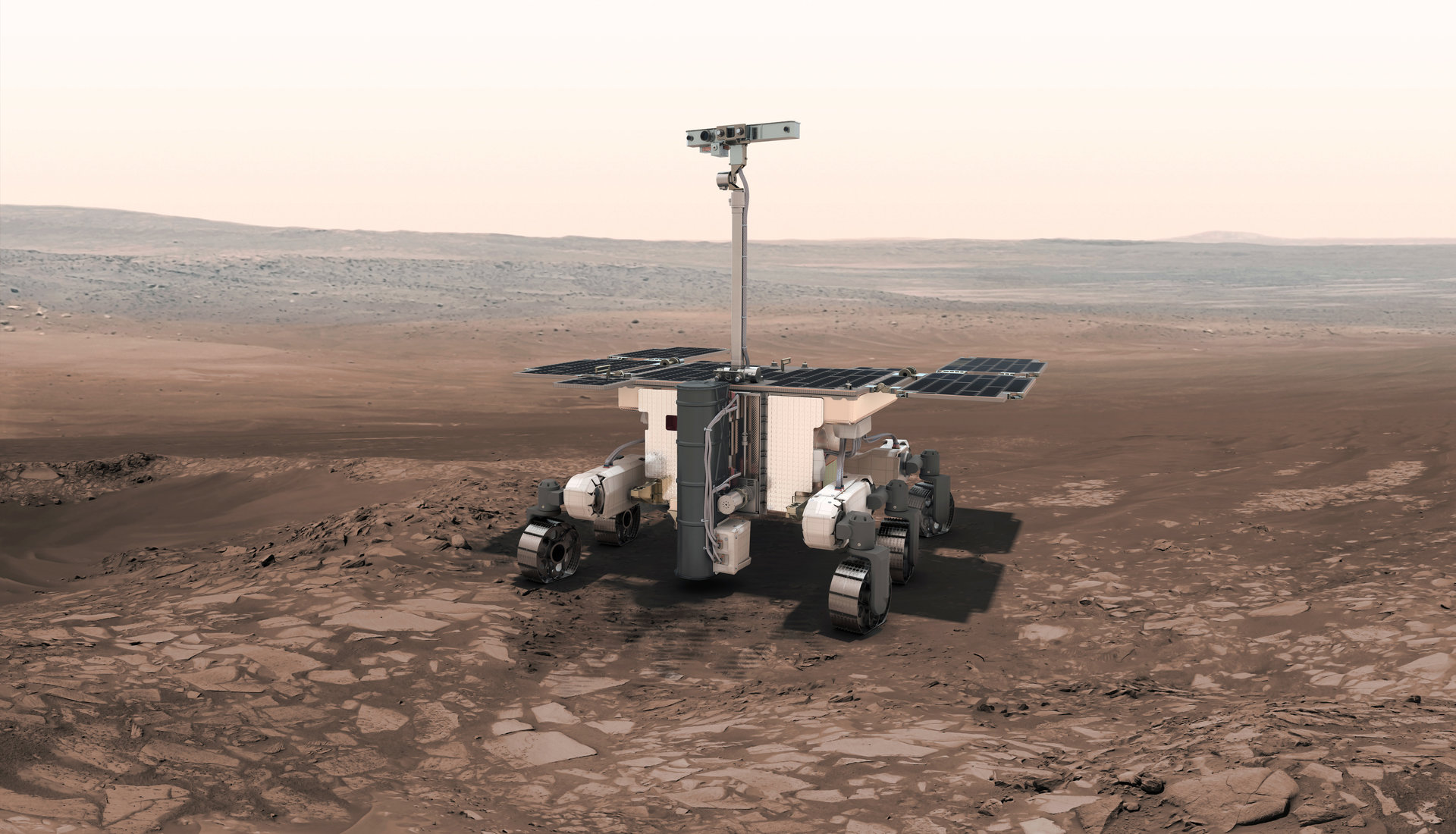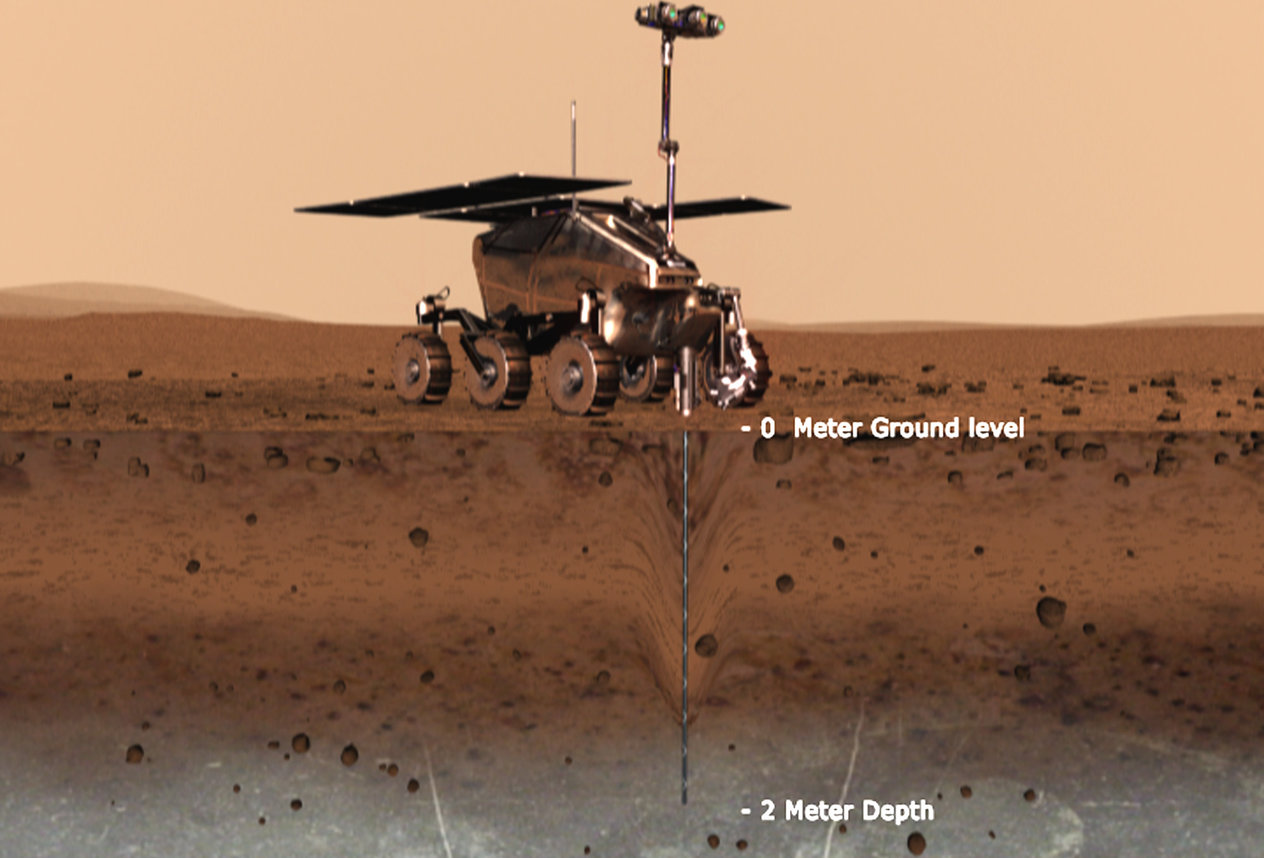Next-Gen Mars Rover Will Explore Potentially Habitable Regions of the Red Planet

Watch out, Mars. Scientists are going to kick the search for habitability up a notch in 2020, when NASA and the European Space Agency plan to send rovers to the Red Planet to survey, drill, and take pictures of potentially habitable regions.
A recent issue of Astrobiology focuses on the ESA rover mission, which is called ExoMars. The rover will roam the surface in search of places where ancient microbes lived, which would likely be in areas with abundant water and energy. It will also search for "biosignatures," or substances that provide scientific evidence of past life.
Here's the challenge for ExoMars: If you're looking for ancient biosignatures on Earth — say, more than 3.5 billion years old — it's very difficult to tell the difference between a biosignature or a geologic signature. This is because the Earth has very active geology. Earthquakes and other movements of plate tectonics tend to crush and distort fossils.
Mars, however, has a quieter history; the planet appears to lack global plate tectonics. Jorge Vago, a project scientist on ESA’s ExoMars mission, acknowledged that even if ExoMars finds something interesting, we may not know for sure what it is unless we can bring back a sample to Earth.
"With the very best technologies we have on Earth, we barely get to what we claim is the threshold for saying you made a good, reasonable case for proving there was life there," said Vago.

But there are some things that geologists can agree on; we know of environments more likely to host ancient life than others. On Earth, these tend to be areas of stable water over long periods of time which have a source of energy. And that's exactly the kind of environment in which ExoMars will land. ESA has identified two locations: Oxia Planum and Mawrth Vallis. These landing zones are only a few hundred miles apart, but they lie in regions where ancient water channels likely flowed. Oxia Planum appears to have clay-rich materials (clay forms in water) and Mawrth Vallis may have old underwater hydrothermal vents, where life on Earth thrives.
The instruments aboard ExoMars, while not as sophisticated as those in a laboratory on Earth, may still be able to detect ancient biosignatures, Vago said. Along with the usual cameras and spectrometers, ExoMars will carry a new instrument called the Mars Organic Molecule Analyser, MOMA for short. Samples from the rover's drill will go into one of 21 single-use ovens, where the materials will be cooked and analyzed using a gas chromatograph, a sort of sniffing instrument. NASA's Curiosity rover, by comparison, carries two reusable ovens and a gas chromatograph, but the sniffer was likely contaminated by a vapor leak early in the mission.
Get the Space.com Newsletter
Breaking space news, the latest updates on rocket launches, skywatching events and more!
MOMA will be on the look out for chirality, which describes the geometry of a molecule and can be a reliable indication of life. Scientists describe molecules as either "left-handed" or "right-handed" depending on their configuration. On Earth, amino acids and sugars — the building blocks of life — only exist in the left-handed configuration. So if ExoMars finds a sample of sugars and amino acids where all the molecules are left-handed, this may mean the molecules came from life.
Another new feature on ExoMars is the rover’s capacity for extracting organic molecules using a high-power ultraviolet laser. Vago said the process is so fast that they can remove the organic molecules without destroying the underlying perchlorate salts. If the salts are destroyed, it becomes more difficult for scientists to prove if the organics came from a biosignature.
RELATED: Tunnels on Mars Might Protect Astronauts From Dangerous Levels of Radiation
Other new instruments on ExoMars focus on the planet’s subsurface. These include a long drill and ground-penetrating radar called WISDOM (Water Ice and Subsurface Deposit Observation On Mars), which will examine the geology underneath the rover. Another instrument called Adron will augment the work of WISDOM by hunting for subsurface water and hydrated minerals.
But even with the best technology, recent history shows there are no guarantees of proving ancient life on Mars — let alone on Earth, in certain cases. In the last two years, geologists said they found evidence of ancient life in 4.1 billion-year-old rocks in Western Australia, as well as 4.28-billion-year-old rocks in Quebec, Canada.
The finds remain controversial, though. Several lines of evidence are needed to convince skeptical scientists of the veracity of a fossil's date.
Vago argues that chemical biosignatures are probably one of the most important indicators, since they can demonstrate chirality and molecular weights that favor living organisms.
"You have to find a number of biosignature [types] at the same time," Vago said. "You can't just hope to wing it or swing it just by finding one thing that looks like it could have been life."
Originally published on Seeker.
Join our Space Forums to keep talking space on the latest missions, night sky and more! And if you have a news tip, correction or comment, let us know at: community@space.com.

Elizabeth Howell (she/her), Ph.D., was a staff writer in the spaceflight channel between 2022 and 2024 specializing in Canadian space news. She was contributing writer for Space.com for 10 years from 2012 to 2024. Elizabeth's reporting includes multiple exclusives with the White House, leading world coverage about a lost-and-found space tomato on the International Space Station, witnessing five human spaceflight launches on two continents, flying parabolic, working inside a spacesuit, and participating in a simulated Mars mission. Her latest book, "Why Am I Taller?" (ECW Press, 2022) is co-written with astronaut Dave Williams.
